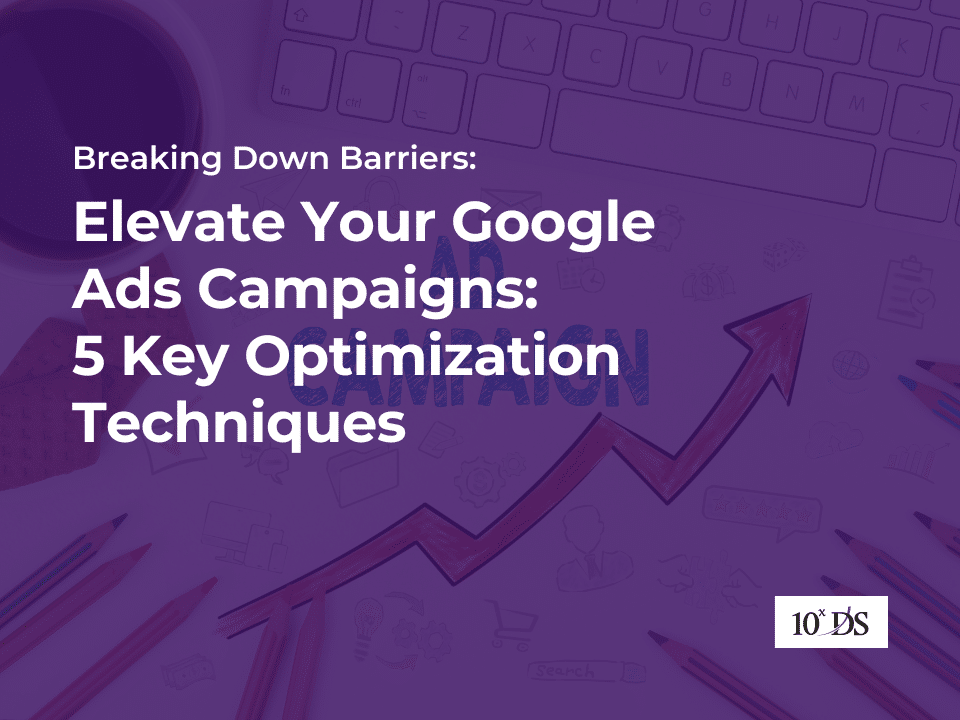
Elevate Your Google Ads Campaigns: 5 Key Optimization Techniques
In the dynamic and highly competitive landscape of digital advertising, Google Ads stands out as a crucial tool for businesses aiming to reach their target audiences and drive measurable results. According to Google, businesses make an average of $2 in revenue for every $1 they spend on Google Ads, underscoring the platform’s potential for generating a significant return on investment. However, achieving such impressive results requires more than just setting up a few ad campaigns; it demands regular audits and strategic optimizations. For example, a study by WordStream revealed that businesses that consistently optimized their Google Ads saw a 25% increase in conversion rates and a 20% decrease in cost per acquisition (CPA) over six months. This blog will explore five essential ways to audit and optimize your Google Ads campaigns to boost your results, while also highlighting recent trends and real-world examples to illustrate these strategies in action.
Keyword Analysis and Optimization
Keywords are the foundation of any Google Ads campaign. Regularly reviewing and refining your keyword list can significantly improve your campaign performance. To optimize your keywords, begin by conducting comprehensive keyword research using tools like Google Keyword Planner to find relevant and high-performing keywords. It’s also crucial to identify and add negative keywords to prevent your ads from showing for irrelevant searches, which helps in reducing wasted spend. Experimenting with different keyword match types—broad match, phrase match, and exact match—can help determine which combination works best for your campaign goals. For example, a local bakery in Dubai optimizing its keyword strategy by focusing on long-tail keywords such as “best gluten-free cupcakes in Dubai” and “vegan bakery near me” can expect a considerable increase in traffic and rise in sales. Additionally, analyzing search term reports can reveal new keyword opportunities and highlight underperforming ones that should be removed. A recent trend to note is the rise of voice search, which is changing how people search online. Consider optimizing for long-tail keywords and natural language queries to capture this growing segment.
Ad Copy and Extensions Optimization
Your ad copy is your first impression with potential customers, making it essential to ensure your ads are compelling and relevant. Regularly testing different versions of your ad copy, focusing on headlines, descriptions, and calls to action, can reveal what resonates best with your audience. Take advantage of ad extensions such as site link, callout, and structured snippet extensions to provide additional information and increase your ad’s visibility. Utilizing responsive search ads allows for automatic testing of multiple headlines and descriptions, letting Google show the best-performing combinations. In terms of recent trends, personalization is becoming increasingly important. Crafting personalized ad copy that speaks directly to different audience segments can improve engagement and conversion rates. For example, clothing retailers uses A/B testing to refine its ad copy and incorporated personalized messages for different segments, such as “Summer Dresses for Teens” and “Elegant Evening Gowns for Women” to target an increase in click-through rates (CTR) and boost in conversion rates.
Landing Page Experience
Even the best ad campaigns can fail if the landing pages they direct users to aren’t optimized. Ensuring your landing pages provide a seamless and relevant experience is crucial. Start by making sure your landing page content aligns closely with your ad copy and keywords to provide a consistent user experience. Software companies offering a free trial of their product optimizes their landing page to include a demo video and interactive elements explaining the features. This improves the user experience. With the majority of searches now happening on mobile devices, having a mobile-optimized landing page is essential. Slow-loading pages can drastically increase bounce rates, so use tools like Google PageSpeed Insights to monitor and improve your page load times. Additionally, ensure your landing page has a clear, prominent call to action that guides users toward conversion. A recent trend in this area is the popularity of interactive and immersive landing pages that engage users and provide a richer experience. Consider incorporating elements like videos, infographics, and interactive forms.
Bid and Budget Management
Travel agencies uses Google’s automated bidding strategies to target high-intent keywords during peak travel seasons since effective bid and budget management can make a significant difference in their campaign’s ROI. Utilize Google’s automated bidding strategies to optimize bids for conversions or clicks based on your specific goals. Adjusting your bids based on device, location, and time of day can ensure your ads are shown to the most relevant audience. Regularly review and adjust your budget allocation based on campaign performance, allocating more budget to high-performing campaigns and keywords. The recent trend in bid and budget management is the increasing use of AI and machine learning to optimize bids in real-time, allowing for more precise and efficient budget management.
Performance Tracking and Reporting
Continuous tracking and analysis of your campaign performance are vital for ongoing optimization. Setting up and monitoring conversion tracking allows you to measure the effectiveness of your ads in driving desired actions. Integrating Google Ads with Google Analytics provides deeper insights into user behavior and campaign performance. Generating regular performance reports helps identify trends, successes, and areas for improvement. E-commerce sites integrates Google Ads with Google Analytics to gain better insights into user behavior. By analyzing the data, they try to identify underperforming products and optimize their ads and landing pages accordingly. A recent trend in this area is the use of advanced analytics and data visualization tools, which help marketers gain more actionable insights from their data, enabling more informed decision-making.
Conclusion
By regularly auditing and optimizing your Google Ads campaigns, you can ensure they remain effective and continue to deliver strong results. Stay updated with the latest trends and leverage new tools and strategies to keep your campaigns ahead of the curve. Whether it’s through keyword optimization, ad copy refinement, improving landing page experience, efficient bid management, or thorough performance tracking, each step plays a crucial role in the overall success of your digital advertising efforts. Talk to our digital marketing team to learn more.


